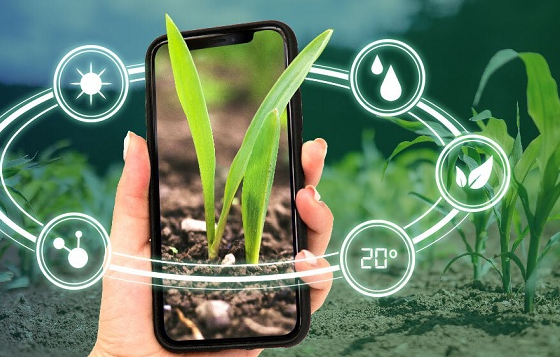Agristack: A Digital Revolution in Agriculture (GS Paper 3, Economy)

Introduction
- In the 2024-25 Budget, Finance Minister Nirmala Sitharaman announced a groundbreaking initiative for the agricultural sector: the Digital Public Infrastructure (DPI).
- This ambitious project aims to connect over six crore farmers to a formal land registry system through Agristack.
What is Agristack?
- Agristack is a digital framework designed to build a comprehensive database for farmers.
- This database will include detailed information on farmers' identities, land records, income, loans, crop details, and insurance history.
- Launched by the Ministry of Agriculture in 2021, Agristack leverages data from farms and government APIs to create a unified and accurate agricultural record-keeping system.
Data Sources for Agristack
Agristack’s database will be constructed from three primary sources:
- Farmers Registry: Each farmer will receive a unique digital ID linked to their Aadhaar and land records. This registry ensures that every farmer is accurately identified and associated with their respective land holdings. The digital ID will streamline access to various government schemes and services, reducing bureaucratic hurdles.
- Geo-referenced Village Maps: These digital maps provide detailed layouts of farms, enabling precise tracking of crop patterns and land use. Using geo-referencing technology, these maps will create a visual representation of farm boundaries and the crops grown on them, facilitating better planning and monitoring.
- Crop Sown Registry: Utilizing satellite data and remote sensing technology, this registry will create precise maps of crops. By regularly updating crop information, it ensures accurate and real-time data on the types and quantities of crops sown, which is essential for effective decision-making in agriculture.
Purpose
- The primary aim of Agristack is to simplify information access, reduce redundant paperwork, and enhance the accuracy of agricultural records.
- By centralizing data, Agristack will help farmers better plan their sales and assist the government in implementing and monitoring various agricultural schemes.
- Applications like e-Nam, eChoupal, and NeML will be integrated into the framework, offering farmers vital information on weather, market supply chains, and storage.
Benefits
- Simplified Information Access: Farmers will have a single point of access to all their agricultural data, eliminating the need to navigate multiple systems. This ease of access will save time and effort, allowing farmers to focus more on their core activities.
- Reduced Redundant Paperwork: By digitizing records and processes, Agristack will minimize paperwork, reducing administrative burdens on farmers and government agencies. This will lead to faster processing of applications and claims.
- Enhanced Record Accuracy: The use of advanced technologies like satellite imaging and geo-referencing ensures high accuracy in record-keeping. Accurate records are crucial for fair distribution of resources and effective implementation of policies.
-
Stakeholders and Collaborations
- The Ministry of Agriculture and Farmers’ Welfare is the chief overseer of Agristack. While private companies such as Amazon and Microsoft are involved in specific use cases, they do not have direct access to Agristack data. Their collaboration focuses on leveraging their technological expertise to enhance the project's efficiency.
- Ministry of Agriculture and Farmers’ Welfare: The primary authority responsible for the implementation and management of Agristack. The Ministry ensures that the project aligns with national agricultural policies and goals.
- Private Companies: Tech giants like Amazon and Microsoft provide technological support, helping to develop and deploy advanced tools and systems. Their involvement brings innovation and expertise, though they do not have direct access to sensitive data, ensuring data privacy and security.
Challenges Ahead
- Despite its potential, Agristack faces several challenges. These include outdated land records, a slow digitization process, and the need for a robust mechanism to resolve land border disputes. Addressing these issues is crucial for the successful implementation of Agristack.
- Outdated Land Records: Many land records are outdated or inaccurate, posing a significant challenge for the digitization process. Updating and verifying these records is a massive undertaking that requires meticulous effort and coordination.
- Slow Digitization Process: The process of digitizing vast amounts of data is time-consuming and requires substantial resources. Ensuring timely and efficient digitization is critical to the success of Agristack.
- Land Border Disputes: Disputes over land boundaries can complicate the mapping and record-keeping process. Establishing a robust dispute resolution mechanism is essential to address these conflicts effectively.
Conclusion
- Agristack represents a significant step towards modernizing India's agricultural sector.
- By creating a unified digital database, Agristack aims to empower farmers with accurate and timely information, streamline agricultural processes, and improve the overall efficiency of the sector.
- As the project progresses, overcoming the existing challenges will be key to unlocking its full potential and transforming Indian agriculture.


